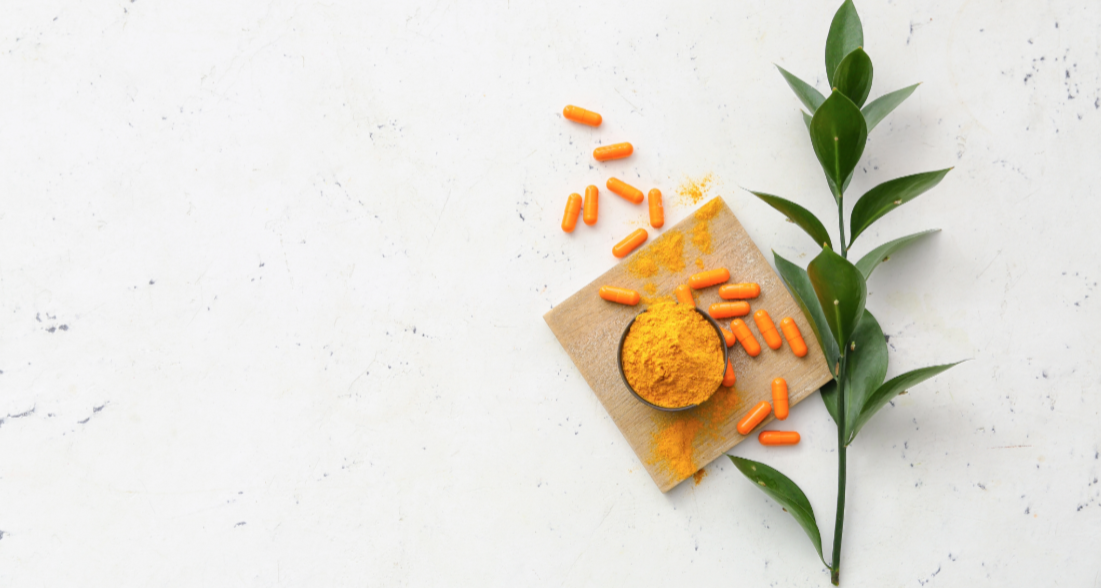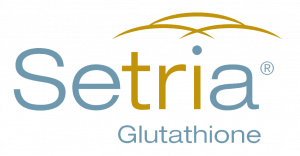Knowledge Hub
Aqualox
AquaLOX is a water-soluble version of one of the world’s best-selling joint health ingredients, 5-LOXIN. 5-LOXIN® has been clinically demonstrated to improve joint comfort and protect against cartilage degradation. A novel Boswellia serrata extract enriched with 30% 3-O-acetyl-11-keto-beta-boswellic acid (AKBA), AquaLOX exhibits potential anti-inflammatory properties by inhibiting the 5-lipoxygenase enzyme. It has been the subject of 13 pre-clinical studies and 2 human clinical trials. One of the key features of 5-LOXIN in any formulation is the clinical work that has demonstrated efficacy starting at 7 days – at a significantly lower dose (100 mg) than other joint health ingredients. This fast efficacy and low dose allow 5-LOXIN to compete with non-natural or over-the-counter solutions. Beyond joint comfort and flexibility improvements, 5-LOXIN also positively impacts biological markers associated with joint health and inflammation, including TNFa, CRP, and IL-6. It was also shown to significantly inhibit matrix metalloproteinase (MMP-3), an enzyme that breaks down cartilage, collagen and connective tissues. Pharmacokinetic Study Shows AquaLOX Matches 5-LOXIN In a RDBC crossover clinical trial, healthy adults took either 40 mg AquaLOX (31.2 mg AKBA) or 100 mg 5-LOXIN (30 mg AKBA) in a random order on separate occasions. The results for AUC0-∞ (Area under the curve) showed that similar amounts of total AKBA were absorbed with each product. This demonstrated that the new product form was a highly efficient way of delivering the primary active ingredient. Aqualox combines naturally effective botanicals with cutting-edge science for the most effective AKBA source, and the greatest benefits to musculoskeletal health.
Learn moreSetria Glutathione
A unique tripeptide form of glutathione, Setria has been clinically shown to raise blood glutathione levels. Manufactured using a fermentation process, Setria® Glutathione is a powerful tripeptide that enhances the glutathione content of critical tissues. Glutathione is the most important antioxidant in the body. Setria® Glutathione is L-Glutathione or Reduced Glutathione and is superior to other glutathione based on the following features: Clinically studied to increase blood glutathione levels and support the immune system A pure and safe material with an assay value of 98.0% – 101.0% The Role of Glutathione Our bodies obtain glutathione in two ways: from the foods we eat and from our own internal production. Because of the body’s ability to make glutathione, it is not considered an “essential” nutrient. Exposure to toxins, ingested and environmental chemicals and even things as healthy as exercise can all increase free radicals and ramp up your body’s need for glutathione. Time of Day: According to researchers at Emory University, levels of glutathione vary over a 24-hour period, spiking about six hours after each meal and hitting their lowest point in the morning hours. Age: Young, healthy people tend to have enough glutathione. However, glutathione levels start to decline at around age 45 and continue to decline until death. Health Conditions: Glutathione status may be depleted by a variety of different health conditions. Diet: The best dietary sources of glutathione are freshly prepared meats and fresh fruits and vegetables (both raw and cooked). Most processed foods have little to no glutathione. Glutathione Antagonists: Some foods – such as cereals, bread, and dairy products – are not only lacking glutathione, they actually act as glutathione antagonists. Common beverages such as tea and coffee also contain glutathione -destroying compounds, although in lower concentrations. Lifestyle Factors: Because cigarette smoking and excessive alcohol intake cause an increase in free radical production, both habits deplete glutathione levels. Medications: Both prescription and over-the-counter drugs can lower glutathione status. Weight: People who are overweight tend to have lower glutathione levels than those who are within normal weight range because excess fat is correlated with oxidative (free radical-induced) stress. Evidence behind Setria “A little over 50 years ago it was recognized that many chemicals we are exposed to are activated in the body to reactive chemicals. The most central way that the body gets rid of these is by reacting them with glutathione.” – Dr. Dean Jones PhD, Professor of biochemistry, Director of Nutritional Health Sciences, Emory University Randomised controlled trial of oral glutathione supplementation on body stores of glutathione. Link to study Daily consumption of GSH supplements was found to be effective at increasing body compartment stores of GSH. The 2014 six-month clinical trial, led by Dr. John P. Richie of Penn State University, evaluated the efficacy of Setria® Glutathione supplementation at enhancing body stores of glutathione, and the results show that glutathione supplementation may represent an effective intervention strategy to not only enhance body stores but also boost the body’s immune function. About the Study Trial measured effect of glutathione supplementation at 250 mg/day and 1000 mg/day on glutathione levels in different blood components and exfoliated buccal mucosal cells over a six month period. Subjects were 54 healthy adults (41 females/13 males), 28-72 years of age (mean=46.6 years). Results of the study showed glutathione levels in the blood increased after one, three and six months vs. baseline at both doses. At six months, mean glutathione levels increased 30-35 percent in erythrocytes, plasma, and lymphocytes, and 260 percent in buccal cells in the high dose group (P<0.05). Glutathione levels increased 17 and 29 percent in blood and erythrocytes, respectively, in the low dose group (P<0.05). Natural killer cytotoxicity increased two fold in the high-dose group versus placebo at 3 months. A reduction in oxidative stress in both glutathione dose groups was indicated by decreases in the oxidised to reduced glutathione ratio in whole blood after 6 months.
Learn moreQuali-C
Quality Vitamin C Unlocking the Power of Purity: Why Quali-C® is the Gold Standard in Vitamin C Supplements In a world increasingly conscious of health and wellness, vitamin C remains one of the most popular and essential nutrients. Known for its immune-supporting properties, skin health benefits, and antioxidant power, vitamin C is a daily must-have. But not all vitamin C supplements are created equal. Enter Quali-C®, a name synonymous with purity, quality, and trust. What is Quali-C®? Quali-C® is a branded form of ascorbic acid (vitamin C) manufactured exclusively in Scotland by DSM Nutritional Products, one of the world’s leading producers of vitamins. Unlike most generic vitamin C products that are made in China, Quali-C® stands out for its European origin, rigorous quality standards, and transparent production practices. Why Does the Source of Your Vitamin C Matter? The supplement industry is vast and, unfortunately, largely unregulated in many countries. This means that the quality of raw materials can vary significantly. With Quali-C®, you're getting vitamin C that is: Produced in Western Europe (Scotland) under strict Good Manufacturing Practices (GMP) Non-GMO and free from allergens like gluten, soy, and dairy Tested rigorously for contaminants and purity Backed by traceable sourcing and environmental responsibility Benefits of Quali-C® Vitamin C While the basic function of ascorbic acid remains the same regardless of the brand, the purity and bioavailability of the source can affect how your body absorbs and uses it. Here’s why Quali-C® is a preferred choice for health-conscious consumers: 1. Immune Support Vitamin C plays a crucial role in supporting a healthy immune system. Quali-C® delivers it in its purest form, ensuring you get maximum benefits with minimal additives. 2. Antioxidant Protection It helps protect cells from oxidative stress, which is linked to aging and chronic diseases. 3. Collagen Production Essential for healthy skin, joints, and blood vessels, vitamin C boosts natural collagen synthesis. 4. Ethical and Sustainable Quali-C® production adheres to DSM’s high environmental standards, making it a sustainable choice for eco-conscious consumers. How to Identify Quali-C® in Supplements Not all supplements that contain vitamin C use the Quali-C® brand. When shopping for supplements, check the label or product description for a mention of "Quali-C®" or "Scottish-made vitamin C." Brands that value quality often highlight this distinction. In a supplement market flooded with choices, transparency, origin, and quality are more important than ever. Quali-C® Vitamin C offers peace of mind for those who want to nourish their bodies with the very best. Whether you're boosting immunity during cold season or improving your daily wellness routine, choosing Quali-C® is a smart, informed step toward optimal health.
Learn moreVitamin D3
Vitamin D is a fat-soluble vitamin that is naturally present in a few foods, fortified in others and available as a food supplement. It is produced endogenously when ultraviolet (UV) rays from sunlight strike the skin and trigger vitamin D synthesis. When your skin gets enough direct UV light from sunshine it makes about 90% of the vitamin D it needs. DID YOU KNOW We get vitamin D3 from the sun. We need it to make calcium in the body, which helps strengthen your bones. Supports Bone Health Reduces Inflammation Strengthens Heart The recommended form of vitamin D is vitamin D3 or cholecalciferol. This is the natural, active form of vitamin D that your body makes from sunlight. Cholecalciferol is one of the five types vitamin D. Plants produce Vitamin D2 when they are exposed to UV light however, although you need both forms, Vitamin D3 is more important for your health and wellbeing. Our bodies absorb and use Vitamin D3 better and it is also more effective at treating diseases. Only after skin exposure to sufficient sunlight is it possible for your body to make vitamin D3 which can present a problem for those in the Northern Hemisphere and those with darker skin, where the sunlight is not as easily absorbed. Older adults are at increased risk of developing vitamin D insufficiency, partly because the skin’s ability to synthesise vitamin D declines with age but also because older adults are likely to spend more time indoors, reducing their exposure to sunlight. Vitamin D is fat soluble, its absorption depends on the gut’s ability to absorb dietary fat. Certain forms of liver disease, cystic fibrosis, celiac disease, Crohn’s disease and ulcerative colitis present fat malabsorption issues within the body which in turn affects levels of vitamin D. Your body requires vitamin D to absorb calcium; too little vitamin D in the body results in soft bones in children (rickets) and fragile, misshapen bones in adults (osteomalacia). Vitamin D promotes calcium absorption in the gut and maintains adequate serum calcium and phosphate concentrations to enable normal bone mineralisation. Your body does not make calcium, you have to consume it in your diet and that’s why vitamin D plays such a vital role in bone health. Your body also needs vitamin D for other important functions. Vitamin D roles in the body include reduction of inflammation as well as modulation of such processes as cell growth, neuromuscular and immune function and glucose metabolism. Muscle weakness may be another side effect of low vitamin D levels, especially in the elderly and a recent survey concluded that a vitamin D deficiency is also linked to heart disease. Perhaps somewhat surprisingly, not many foods are rich in vitamin D unless it has been “fortified” at the point of manufacture. Some super “D” foods are: Salmon (especially wild-caught) Mackerel (especially wild-caught) Mushrooms Vitamin D is the only vitamin supplement that the Department of Health recommends for the general population. The government estimates around 25% of teenagers and adults in the UK have low levels of vitamin D, which puts them at risk of deficiency and associated health issues. As there are so few food sources of vitamin D and sun exposure can be unreliable, food supplements are considered a safe way to prevent a deficiency.
Learn moreNucleotide
Nucleotides exist in all living organisms. In fact, every cell in your body contains them – over a billion per cell. Nucleotides are important for many biological functions, including their role as the building blocks of DNA and RNA. DID YOU KNOW Nucleotides are important for many biological functions, including their role as the building blocks of DNA and RNA. Cell regeneration Supports Immunity Muscle Function The body has an on-going demand for new cell production. Adults must create new cells at a rate at least sufficient to replace the cells that die. To do this the cell and its DNA divides to form two new cells. This cell proliferation is a lengthy and complicated process, dependant on energy and the supply of all five specific nucleotide building blocks to build the DNA and the RNA molecules in the new cells. The rate of proliferation of cells found in the intestinal lining, known as the epithelial cells, are higher here than elsewhere in the body. That means that cells are constantly being created to replace damaged or lost cells, every three to five days to be precise. This turnover of cells is so high, the body requires assistance via dietary intake as whilst the body can make nucleotides itself or salvage them from dying cells, certain types of cells require supplementary nucleotides provided in a person’s diet. During the last three months of pregnancy, antibodies are passed from the mother to the child so when born, they are protected with an inherited immunity which typically lasts up to six months depending on the health of the mother. Crucially, through breastmilk, babies take on board nucleotides which are vital to help normalise microflora and therefore help the immune system thrive beyond that which has been passed from the parent. Many infant formulas now contain nucleotides because studies have shown that babies fed nucleotide-supplemented infant formula experience better growth and development, maintain a healthier immune system and have increased levels of beneficial intestinal bacteria which reduce gastrointestinal distress. Beyond breast milk, nucleotides are typically found in foods which are far less common in the modern diet. Meals containing tripe, liver and kidneys provide high levels of nucleotides but typically, these are not foods which are consumed today and especially not for vegetarians and vegans. Unlike some vitamins and minerals, nucleotides are not yet considered essential nutrients for humans but poor diet, stress, chronic illness and the excessive use of antibiotics and alcohol all increase the body’s need for nucleotides in order to facilitate regular and effective cell proliferation. Their universal use and fundamental functionality and efficacy in every living organism make nucleotides a valuable management tool for many stress and health related conditions. For people with celiac disease supplementing with nucleotides could be highly beneficial to assist the small intestine repair from inflammation damage and promote villi growth. For endurance and performance athletes, nucleotides are essential for muscle function. Besides protein synthesis, they improve oxygen transport and reduce the effects of lesions in the intestinal tract and muscles, potentially decreasing recovery time and the impact of high intensity activity. Indeed, much potential exists for the use of nucleotides in a sports person’s supplement regime. By supporting a more rapid turnover of immune, digestive, muscle and blood cells, along with improving anabolic vs. catabolic drive, this “new” type of nutrient can be a real support to the training and recovery processes of a serious athlete. For those susceptible to the flu virus, if the nucleotide supply is insufficient, the viruses will proliferate unhindered, which may lead to more severe symptoms and prolonged illness. Conversely, with enough nucleotides the infection can be quickly counteracted during its initial stages. References Carver JD, Pimentel B, Cox WI, Barness LA. Dietary nucleotide effects upon immune function in infants. Pediatrics. 1991 Aug;88(2):359-63. PMID: 1861940. Mc Naughton L, Bentley DJ, Koeppel P. The effects of a nucleotide supplement on salivary IgA and cortisol after moderate endurance exercise. J Sports Med Phys Fitness. 2006 Mar;46(1):84-9. PMID: 16596104. Koeppel, P. Celiac Disease: Nutritional supplements for period following diagnosis. February 2013 Ostojic SM, Idrizovic K, Stojanovic MD. Sublingual nucleotides prolong run time to exhaustion in young physically active men. Nutrients. 2013 Nov 21;5(11):4776-85. doi: 10.3390/nu5114776. PMID: 24284618; PMCID: PMC3847760.
Learn moreCarnosine
Discovered in 1900, Carnosine is a small dipeptide molecule made up of the amino acids beta alanine and histidine. It has been heralded as the most exciting anti-ageing nutrient ever discovered. DID YOU KNOW Carnosine is found almost exclusively in meat. Anti-Ageing Brain Function Tissue Repair Carnosine is present throughout the body, wherever there are high energy demands such as in the brain, the heart and our muscles. Its function is to protect these vital areas from the metabolic demands of energy production and management. A typical red meat meal may provide 250 mg of carnosine but this is quickly degraded in the body by the carnosinase enzyme. What this means is that even if a person relied on red meat for their carnosine, it would not last long enough in the body to provide sustained protective effects. Supplementation with 1000 mg a day of carnosine overwhelms the carnosinase enzyme, thus enabling the body to maintain consistent blood levels of this critical nutrient. Carnosine is useful in the human body because of its capability of affecting so many different types of tissue. Growing scientific interest in longevity-boosting compounds has led to ground-breaking new research on Carnosine. Highly concentrated in the brain and muscle, Carnosine is a natural antioxidant and glycation-fighting nutrient whose levels in the body naturally decline with age. Carnosine was found to lower excessive immune responses in patients who have overactive immune systems. At the same time, Carnosine increased the immune response in those with under-active immune systems (like the elderly). This dual, regulatory ability of Carnosine makes it a vital tool for people with delicate immune systems, such as those with allergies and autoimmune conditions. Carnosine is produced by the brain and may be an important tool for limiting postoperative cognitive dysfunction. Taking common anaesthetics can often result in an increase in serotonin-derived melanoid (SDM); Carnosine protects against the neurotoxic effects of SDM. Further research has found that Carnosine prevents the swelling, cell death and free radical stress that occurs when the brain is starved of blood and treatment with Carnosine was shown to significantly improve neurological function after a stroke-like event. In addition to the neuroprotective qualities of Carnosine, one study found that after 3 months of Carnosine supplementation at 500mg/day, patients performed better on verbal episodic memory tests. Similarly, another study demonstrated improved verbal episodic memory in elderly people when they were given a combination of Anserine & Carnosine. A cell study found that Carnosine increased the ability of human skin and blood vessel cells to function optimally in the presence of high glucose. Therefore, Carnosine may be an important tool for encouraging wound healing in groups who typically have high blood sugars, particularly the elderly and diabetics. Carnosine’s multiple and interrelated mechanisms of action mean that it can provide benefits to cells and tissues throughout the body that would otherwise succumb to the pathologic effects of aging. References: Hipkiss AR, Cartwright SP, Bromley C, Gross SR, Bill RM. Carnosine: can understanding its actions on energy metabolism and protein homeostasis inform its therapeutic potential? Chem Cent J. 2013 Feb 25;7(1):38. doi: 10.1186/1752-153X-7-38. PMID: 23442334; PMCID: PMC3602167. Mahmood A, FitzGerald AJ, Marchbank T, Ntatsaki E, Murray D, Ghosh S, Playford RJ. Zinc carnosine, a health food supplement that stabilises small bowel integrity and stimulates gut repair processes. Gut. 2007 Feb;56(2):168-75. doi: 10.1136/gut.2006.099929. Epub 2006 Jun 15. PMID: 16777920; PMCID: PMC1856764. Brownrigg TD, Theisen CS, Fibuch EE, Seidler NW. Carnosine protects against the neurotoxic effects of a serotonin-derived melanoid. Neurochem Res. 2011 Mar;36(3):467-75. doi: 10.1007/s11064-010-0365-2. Epub 2010 Dec 14. PMID: 21153702. Min, J., Senut, M. C., Rajanikant, K., Greenberg, E., Bandagi, R., Zemke, D., Mousa, A., Kassab, M., Farooq, M. U., Gupta, R., & Majid, A. (2008). Differential neuroprotective effects of carnosine, anserine, and N-acetyl carnosine against permanent focal ischemia. Journal of neuroscience research, 86(13), 2984–2991. https://doi.org/10.1002/jnr.21744 Rokicki, J., Li, L., Imabayashi, E., Kaneko, J., Hisatsune, T., & Matsuda, H. (2015). Daily Carnosine and Anserine Supplementation Alters Verbal Episodic Memory and Resting State Network Connectivity in Healthy Elderly Adults. Frontiers in aging neuroscience, 7, 219. https://doi.org/10.3389/fnagi.2015.00219 Ansurudeen I, Sunkari VG, Grünler J, Peters V, Schmitt CP, Catrina SB, Brismar K, Forsberg EA. Carnosine enhances diabetic wound healing in the db/db mouse model of type 2 diabetes. Amino Acids. 2012 Jul;43(1):127-34. doi: 10.1007/s00726-012-1269-z. Epub 2012 Mar 24. PMID: 22451275.
Learn moreLevagen+
Exploring the Benefits of Levagen+ A Revolutionary Wellness Ingredient In the realm of health and wellness, constant innovation drives the development of new and effective supplements. One such groundbreaking ingredient making waves in the industry is Levagen+. This cutting-edge compound has gained attention for its potential to promote overall well-being and address various health concerns. Understanding Levagen+ Levagen+ is a patented form of palmitoylethanolamide (PEA), a fatty acid naturally produced in the body. PEA is renowned for its anti-inflammatory and analgesic properties, which contribute to its potential therapeutic effects. Levagen+ is a highly bioavailable and stable form of PEA, making it an attractive option for those seeking natural solutions to enhance their well-being. Anti-Inflammatory Properties One of the key features of Levagen+ is its anti-inflammatory properties. Inflammation is a natural response by the body to injury or infection, but chronic inflammation can lead to various health issues. Levagen+ has been studied for its ability to modulate the inflammatory response, potentially providing relief for conditions associated with inflammation. Pain Management Levagen+ has demonstrated promising results in the realm of pain management. Its analgesic effects make it a potential candidate for addressing chronic pain conditions. Studies have explored its use in conditions such as neuropathic pain and osteoarthritis, showing encouraging outcomes. Neuroprotective Effects Beyond its anti-inflammatory and analgesic properties, Levagen+ has also been investigated for its neuroprotective effects. Some studies suggest that it may have a role in supporting nerve health and protecting against neurodegenerative conditions. This opens up new possibilities for incorporating Levagen+ into formulations designed to support cognitive function. Immune System Support The immune system plays a crucial role in maintaining overall health. Levagen+ has been studied for its immunomodulatory effects, indicating its potential to support a balanced immune response. This could be particularly beneficial for individuals looking to enhance their immune system function. Applications and Future Research As research on this innovative compound continues, we can expect to see a growing body of evidence supporting its efficacy in different applications. Levagen+ represents a promising development in the world of health and wellness. Its multifaceted benefits, ranging from anti-inflammatory and analgesic effects to potential neuroprotective and immune system support, make it an intriguing ingredient for those seeking natural alternatives. With ongoing research, Levagen+ may emerge as a key player in promoting a holistic approach to health and vitality. Supporting Joint Health with Levagen®+ Levagen® has been proven to improve symptoms of joint discomfort, stiffness and function dose-dependently over the course of 8 weeks. Palmitoylethanolamide is both a powerful anti-inflammatory and pain reliever, providing an all-in-one solution for managing discomfort. Steels, Elizabeth. et al. “A double-blind” randomised placebo controlled study assessing safety, tolerability and efficacy of palmitoylethanolamide for symptoms of knee osteoarthritis.” Inflammopharmacology 27.3 (2019): 475 – 485 Headache Study PEA operates through multiple pathways and mechanisms within the body to provide its beneficial effects: DirectlyPEA reduces inflammation locally by binding on to PPAR-a receptors and inhibiting secretion of pro-inflammatory signalling molecules. PEA enhances the levels and actions of other compounds that are anti-inflammatory and provide pain relief (1, 2). This mechanism is known as the ‘entourage effect’. PEA has a naturally low affinity for CB1 and CB2 receptors and only activates transient receptor potential vanilloid type-1 (TRPV1) channels when at very high concentrations in the body. TRPV1 channels are found on the outside of nerve cells and play a part in pain and temperature regulation (3). IndirectlyTo exert its beneficial effects. PEA can enhance the levels and actions of another endocannabinoid, anandamide, which is often dubbed as the ‘bliss’ molecule or the body’s own natural THC (the compound in cannabis that has psychoactive effects and produces a ‘high’). Anandamide has a profound analgesic response, before the pain signal even arrives at the spinal cord. The mode of action that PEA acts upon is by inhibiting the enzyme that degrades this molecule – Fatty Acid Amide Hydrolaze (FAAH). Anandamide act upon CB1 and CB2 receptors and TRPV1 channels, helping to combat pain and increase relaxation (4, 5, 6). Joint Pain Study Change in VAS score from baseline for morning (A) and evening (B) over 2 weeks. * significant difference between groups p < 0.05. David Briskey, Georgia Roche, Amanda Rao. The Effect of a Dispersible Palmitoylethanolamide Levagen+ Compared to a Placebo for Reducing Joint Pain in an Adult Population – A Randomised, Double-Blind Study, International Journal of Nutrition and Food Sciences. Volume 10, Issue 1, January 2021 pp. 9-13.doi: 10.11648/j.ijnfs.20211001.12 Relax with Levagen Supplementing with has been found to significantly reduce levels of anxiety and increase quality of life within 14 days. PEA helps improve mood through its ability to influence the endocannabinoid system, which is known to have an influence on mood and sleep. Rao, Amanda. et al. "Palmitoylethanolamide for sleep disturbance. A double-blind, randomised, placebo-controlled interregional study." Sleep Science and Practice 12.5 (2021) Enhance Sports Performance with Levagen Pushing past your limits is necessary when wanting to adapt and beat your competition. Levagen+ helps you push past your threshold by reducing lactic acid build up and decreasing fatigue. Clinical studies have also found Levagen+ to reduce muscle damage and stimulate growth of muscle tissue post-exercise, allowing individuals to reduce recovery time and enhance muscle adaptations. Mallard, Briskey, Richards, Mills & Rao "The Effect of Orally Dosed Levagen palmitoylethanolamide on Exercise Recovery in Healthy Males - A Double-Blind, Randomized, Placebo-Controlled Study". Nutrients 12.3 (2020):596 Neuropathic Pain Study BPI-PN (A) Pain Severity scores at baseline, 2, 4, 6 and 8 weeks and (B) Pain interference score at baseline, 4 and 8 weeks scores for the active treatment group and the placebo group. Pickering E, Steels EL, Steadman KJ, Rao A, Vitetta L. A randomized controlled trial assessing the safety and efficacy of palmitoylethanolamide for treating diabetic-related peripheral neuropathic pain. Inflammopharmacology 2022 Dec;30(6):2063-2077. 10.1007/s10787-022-01033-8.Epub 2022 Sep 4. PMID: 36057884; PMCID: PMC9700575. Migraine Study (A) Total VAS score over the first 4 h and (B) change in VAS score over the first 4 h. a= significant difference from the baseline in the Levagen+ group (p < 0.05); b = significant difference from the baseline in the placebo group (p < 0.05); *=significant difference between groups (p < 0.05). Levagen+ was clinically researched to significantly reduce VAS scores and resolved migraines classified as moderate when compared to placebo. Briskey D, Skinner R, Smith C, Rao A. Effectiveness of Palmitoylethanolamide Levagen+ Compared to a Placebo for Reducing Pain, Duration, and Medication Use during Migraines in Otherwise Healthy Participants-A Double-Blind Randomised Controlled Study. Pharmaceuticals (Basel). Cognitive Function Study In a brand new study, Levagen®+ efficacy was studied at 700mg or a matching placebo for 6 weeks in a double armed, cross-over trail. Levagen®+ supported significant improvement in serum BDNF levels when compared to placebo and helped to improve memory through better first success and fewer errors. Kim N, Parolin B, Renshaw D, Deb SK, Zariwala MG. Formulated Palmitoylethanolamide Supplementation Improves Parameters of Cognitive Function and BDNF Levels in Young, Healthy Adults: A Randomised Cross-Over Trial. Nutrients. 2024. Skin Health Study The recently published topical study showed the efficacy of Levagen®+ in a topical formulation applied twice daily for 4 weeks. Levagen®+ supported a significant reduction in skin dryness, skin redness, and reduced a total POEM score compared to a comparator cream. Rao A, Moussa AA, Erickson J, Briskey D. Efficacy of Topical Palmitoylethanolamide (Levagen+) for the Management of Eczema Symptoms: A Double-Blind, Comparator-Controlled, Randomized Clinical Trial. Skin Pharmacol Physiol. 2023 Skeletal Muscle Hypertrophy Study In the recently published study, the efficacy of Levagen®+ was evaluated for improvement in skeletal muscle hypertrophy, physical strength, and physical power. The study demonstrated that 300mg Levagen®+ taken daily during an 8 week strength training protocol does not interfere with strength training and can even contribute to increased lower body power. Huschtscha, Z., Silver, J., Gerhardy, M., Urwin, C. S., Kenney, N., Le, V. H., Fyfe, J. J., Feros, S. A., Betik, A. C., Shaw, C. S., Main, L. C., Abbott, G., Tan, S. Y., May, A., Smith, C. M., Kuriel, V., Barnard, J., & Hamilton, D. L. (2024). The Effect of Palmitoylethanolamide (PEA) on Skeletal Muscle Hypertrophy, Strength, and Power in Response to Resistance Training in Healthy Active Adults: A Double-Blind Randomized Control Trial. Sports medicine - open, 10(1), 66.
Learn moreResveratrol
Resveratrol is a type of natural phenol produced by plants in response to injury or when the plant is under attack by pathogens such as bacteria or fungi. It has been detected in more than 70 plant species worldwide, including grapes, peanuts, berries, and pines. DID YOU KNOW Fresh grape skin contains about 50 to 100 μg of resveratrol per gram net weight which subsequently contributes to a relatively high concentration of resveratrol in red wine and grape juice. Heart Health Glucose Tolerance Improving Metabolism We often hear about the apparent health benefits of drinking red wine in moderation, sometimes known as “the French paradox,” as this is associated with improved cardiovascular health. The low incidence of heart disease among the French, who eat a relatively high-fat diet, is attributed to amongst other things, the high consumption of red wine in their diet. As more people take control of their own health by investigating ”alternative” remedies and move away from allopathic medicine, natural products have come under the microscope regarding their potential health benefits for a variety of minor and major, sometimes life-threatening illnesses. Resveratrol has been examined in relation to the reversal of impaired glucose tolerance or prediabetes. Short-term supplementation with resveratrol has been associated with having beneficial effects on glucose and lipid metabolism in individuals with type 2 diabetes which typically occurs in those with impaired glucose tolerance. In 2013, a double blind, placebo-controlled, randomised study monitored the effect of oral resveratrol supplementation (1g a day for 45 days) on the control of glucose metabolism in 66 subjects with type 2 diabetes. Comparison of changes between baseline and end-of-study measures between placebo and intervention groups showed that the supplementation of resveratrol had significantly lowered both fasting glucose and fasting insulin concentrations and had improved measures of glycaemic control and insulin sensitivity. Those participants taking resveratrol supplementation also experienced an increase in the beneficial HDL cholesterol. According to a 2012 Canadian study, resveratrol supplementation could provide similar skeletal muscle benefits as endurance training. The study discovered “combining resveratrol supplementation with exercise training augmented the beneficial effects of exercise alone” and furthermore found that resveratrol supplementation resulted in an increase of endurance, oxidative metabolism, and enhanced cardiac function. In addition, the study concluded the combination of endurance training with resveratrol supplementation resulted in a performance increase of 21%. One of the functions of resveratrol is that it can stimulate certain metabolic pathways similar to exercise, acting in effect as an exercise mimetic. In the same vein, resveratrol increases the oxygen supply to skeletal muscles whilst also improving cardiac function and regulating cardiac fatty acid, all benefits associated with regular exercise. References Szmitko PE, Verma S. Cardiology patient pages. Red wine and your heart. Circulation. 2005 Jan 18;111(2):e10-1. doi: 10.1161/01.CIR.0000151608.29217.62. PMID: 15657377. Movahed A, Nabipour I, Lieben Louis X, Thandapilly SJ, Yu L, Kalantarhormozi M, Rekabpour SJ, Netticadan T. Antihyperglycemic effects of short term resveratrol supplementation in type 2 diabetic patients. Evid Based Complement Alternat Med. 2013;2013:851267. doi: 10.1155/2013/851267. Epub 2013 Sep 1. PMID: 24073011; PMCID: PMC3773903. Kan, N. W., Lee, M. C., Tung, Y. T., Chiu, C. C., Huang, C. C., & Huang, W. C. (2018). The Synergistic Effects of Resveratrol combined with Resistant Training on Exercise Performance and Physiological Adaption. Nutrients, 10(10), 1360. https://doi.org/10.3390/nu10101360 Baltaci, S. B., Mogulkoc, R., & Baltaci, A. K. (2016). Resveratrol and exercise. Biomedical reports, 5(5), 525–530. https://doi.org/10.3892/br.2016.777
Learn moreCoQ10 Beauty and More
Coenzyme Q10, also known as ubiquinone, ubidecarenone, ubiquinol and at times abbreviated to CoQ10 or Q10 is a coenzyme that is present in the bodies of most animals. It is the only antioxidant that humans synthesise in the body. CoQ10 is a fat-soluble substance which resembles a vitamin and is present in most eukaryotic cells, primarily in the mitochondria. CoQ10 works as an electron carrier in the mitochondria, the powerhouse of the cells, to produce energy and is also a powerful antioxidant. It is a component of the electron transport chain and participates in aerobic cellular respiration, which generates energy in the form of ATP. As 95% of the human body’s energy is generated this way, those organs with the highest energy requirements, such as the heart, liver, and kidney, have the highest CoQ10 concentrations. CoQ10 is possibly most well known for being an ingredient in skin creams promising to reduce the signs of aging due to its ability to protect as well as repair the skin. In most people over the age of thirty, the levels of CoQ10 in the skin are below optimum levels resulting in reduced ability to produce collagen, elastin and other important skin molecules. Additionally, CoQ10-deficient skin may be more prone to damage from free radicals, which are particularly abundant in the skin since it is constantly exposed to the elements. CoQ10 is naturally present in small amounts in a wide variety of foods but levels are particularly high in organ meats such as heart, liver, and kidney as well as beef, soy oil, sardines, mackerel, and peanuts. As it is only possible to obtain small amounts through diet and as certain pharmaceuticals such as statins can reduce CoQ10 levels in the body, supervised supplementation is becoming more common. Supplementation of CoQ10 has been found to have a beneficial effect on the condition of some sufferers of migraine. This is based on the theory that migraines are a mitochondrial disorder and that CoQ10 can improve mitochondrial dysfunction. There aren’t many large studies that show strong evidence regarding Coenzyme Q10 and migraines however The Canadian Headache Society guideline for migraine prevention recommends, based on current evidence, that 300 mg of CoQ10 per day should be considered as a choice for prophylaxis. The impairment of the heart’s ability to pump enough blood for all the body’s needs is known as congestive heart failure. In coronary artery disease, an accumulation of atherosclerotic plaque in the coronary arteries may prevent parts of the heart muscle from getting adequate blood supply, which ultimately results in cardiac damage and impaired pumping. Through several echocardiography studies it was discovered that myocardial coenzyme Q10 levels were lower in patients with more severe heart failure which led to several clinical trials of CoQ10 supplementation in heart failure patients. In 2006 a number of small intervention trials that administered supplemental Q10 (100mg – 300mg a day for up to three months) to congestive heart failure patients demonstrated improvements in some cardiac function measures, in conjunction with conventional medical therapy. In the same year a meta-analysis of 10 randomised controlled trials found that coenzyme Q10 supplementation in heart failure patients resulted in a significant, 3.7% improvement in left ventricular ejection fraction. A more recent study of 236 heart failure patients found that lower plasma levels of CoQ10 were associated with a heightened risk of mortality. A much larger trial is presently being conducted to determine the value of coenzyme Q10 supplementation as an adjunct to conventional medical therapy in the treatment of congestive heart failure and the results are sure to be very interesting. Weight loss. Of course there is no magic pill, no easy fix but there are some studies that link CoQ10 and weight loss due to CoQ10’s integral role in the production of cellular energy. By supplementing with Coenzyme Q10, your cells will have the energy they need to function at an optimum level and give your body the ability to proactively lose weight through exercise and diet and may even allow for passive fat burning by maximising your body’s ability to convert food to fuel. Whilst the supplementation of CoQ10 is unproven as a vital addition for good health, it certainly seems that keeping the body’s CoQ10 levels boosted provides a number of positive benefits for general wellbeing.
Learn more













